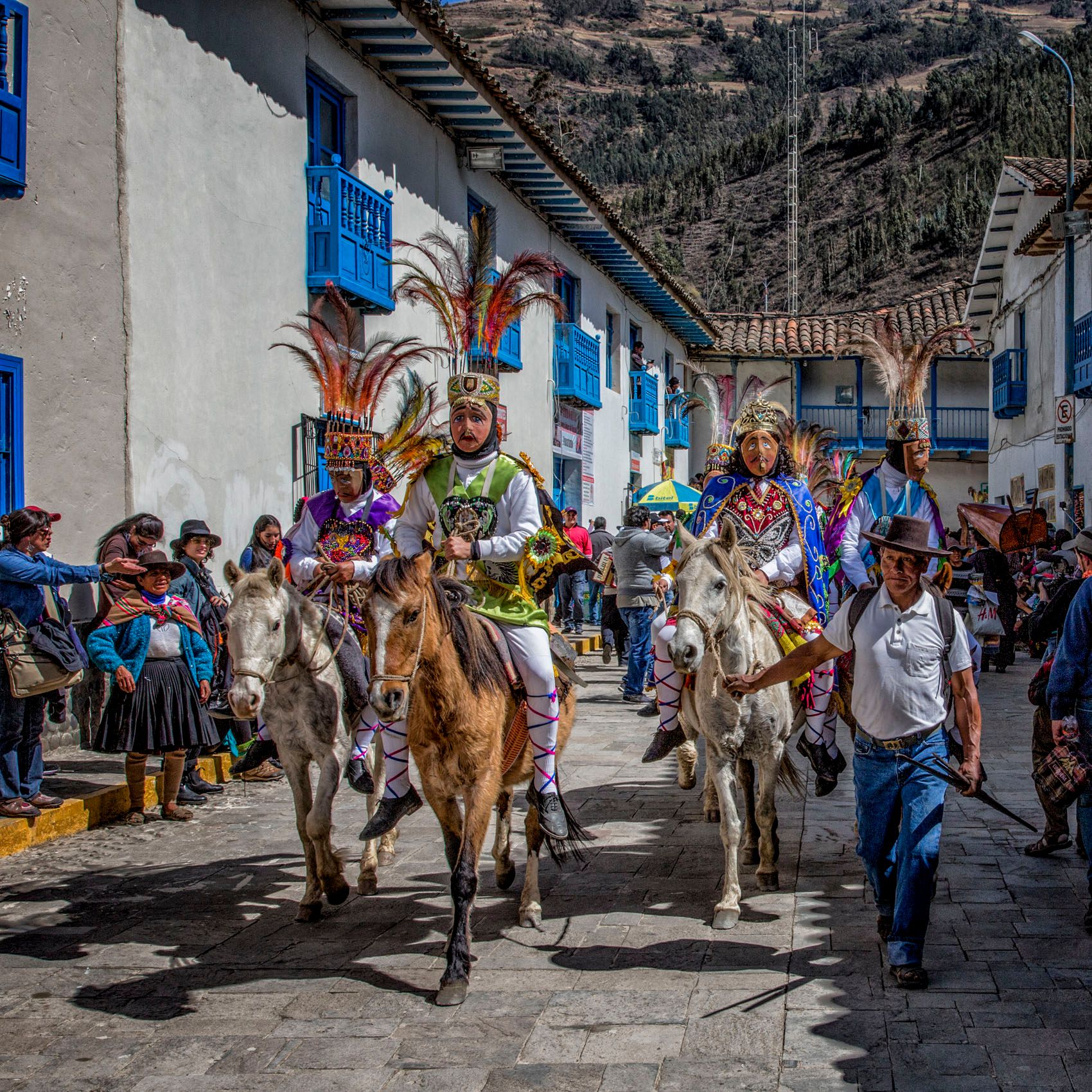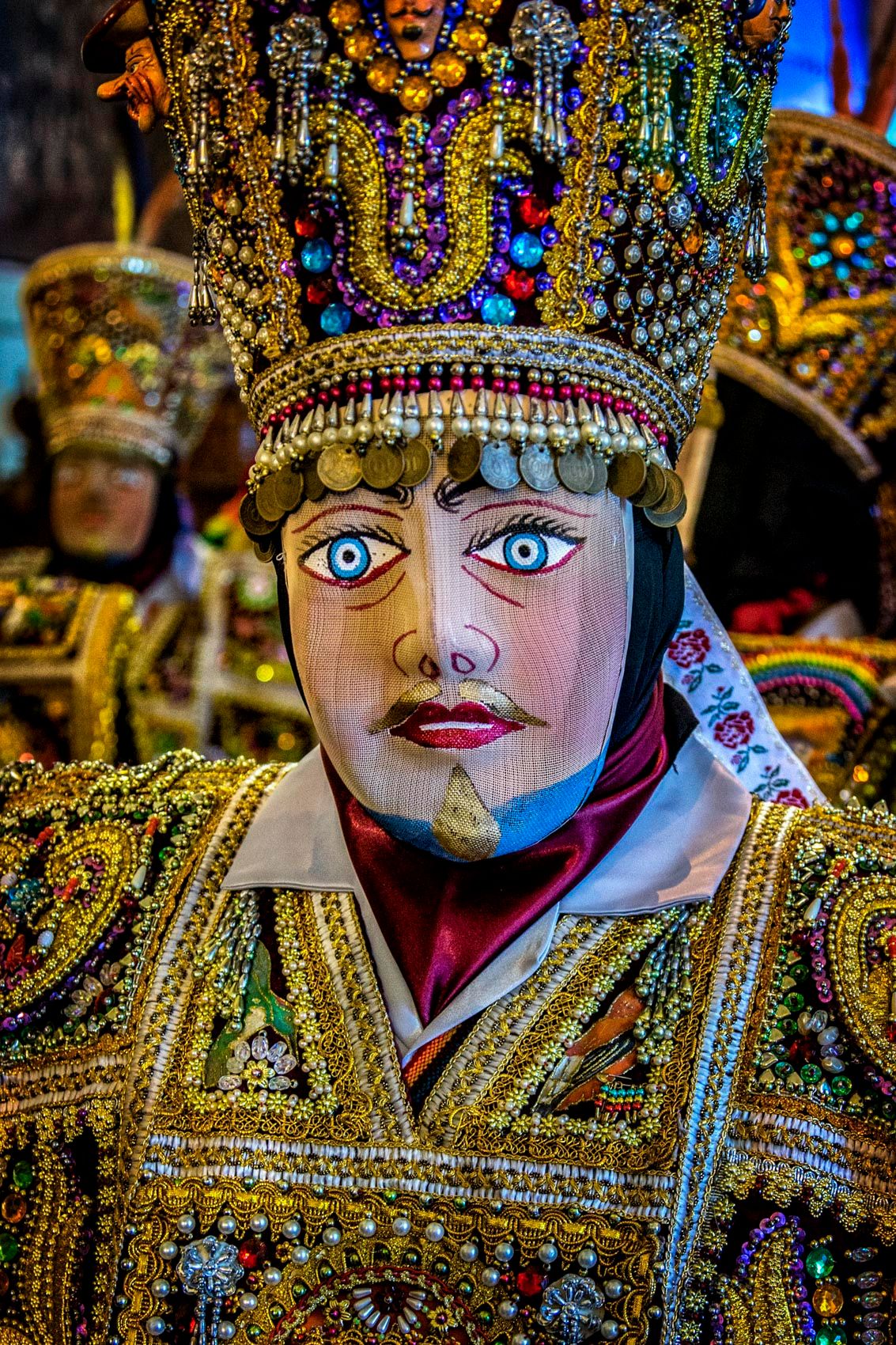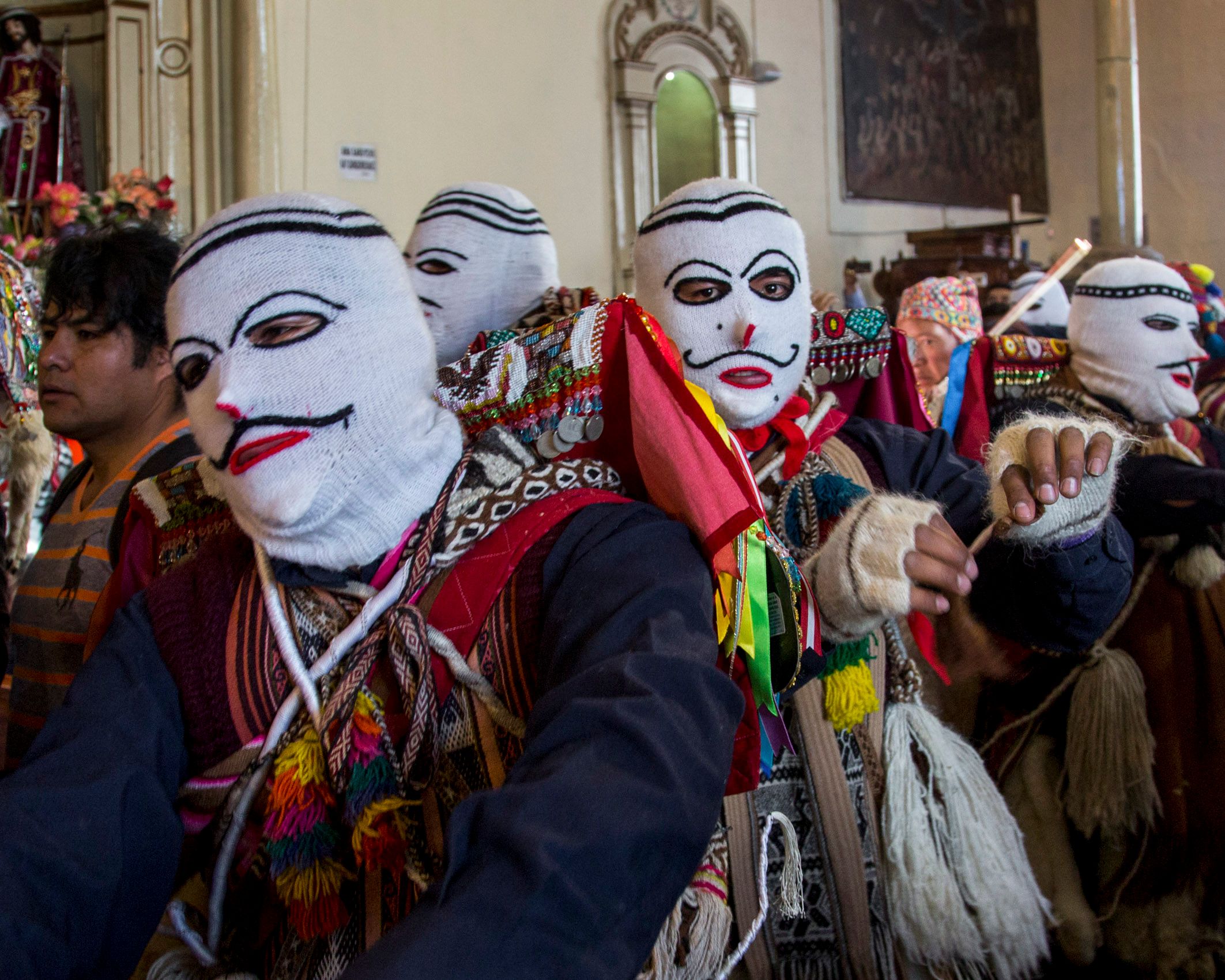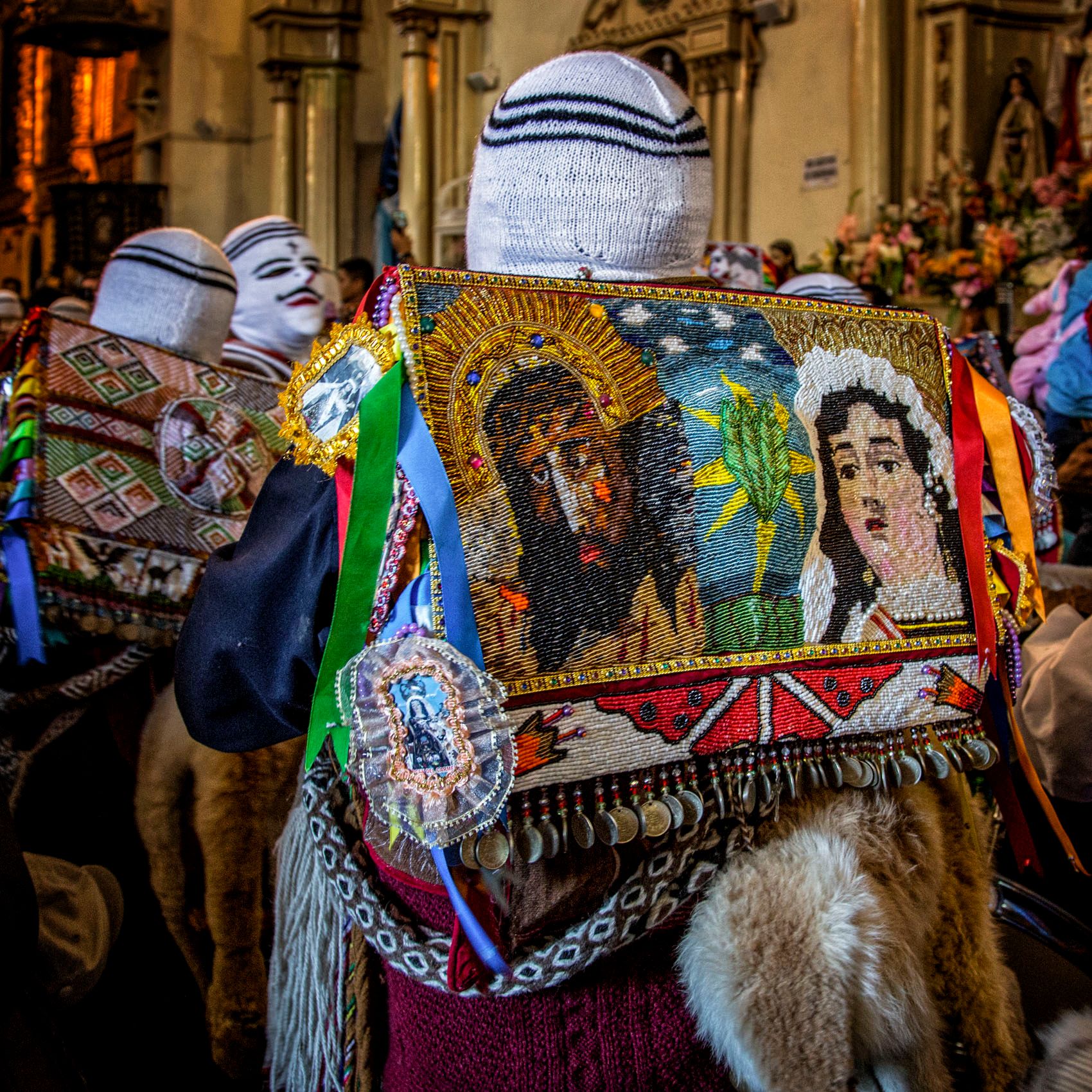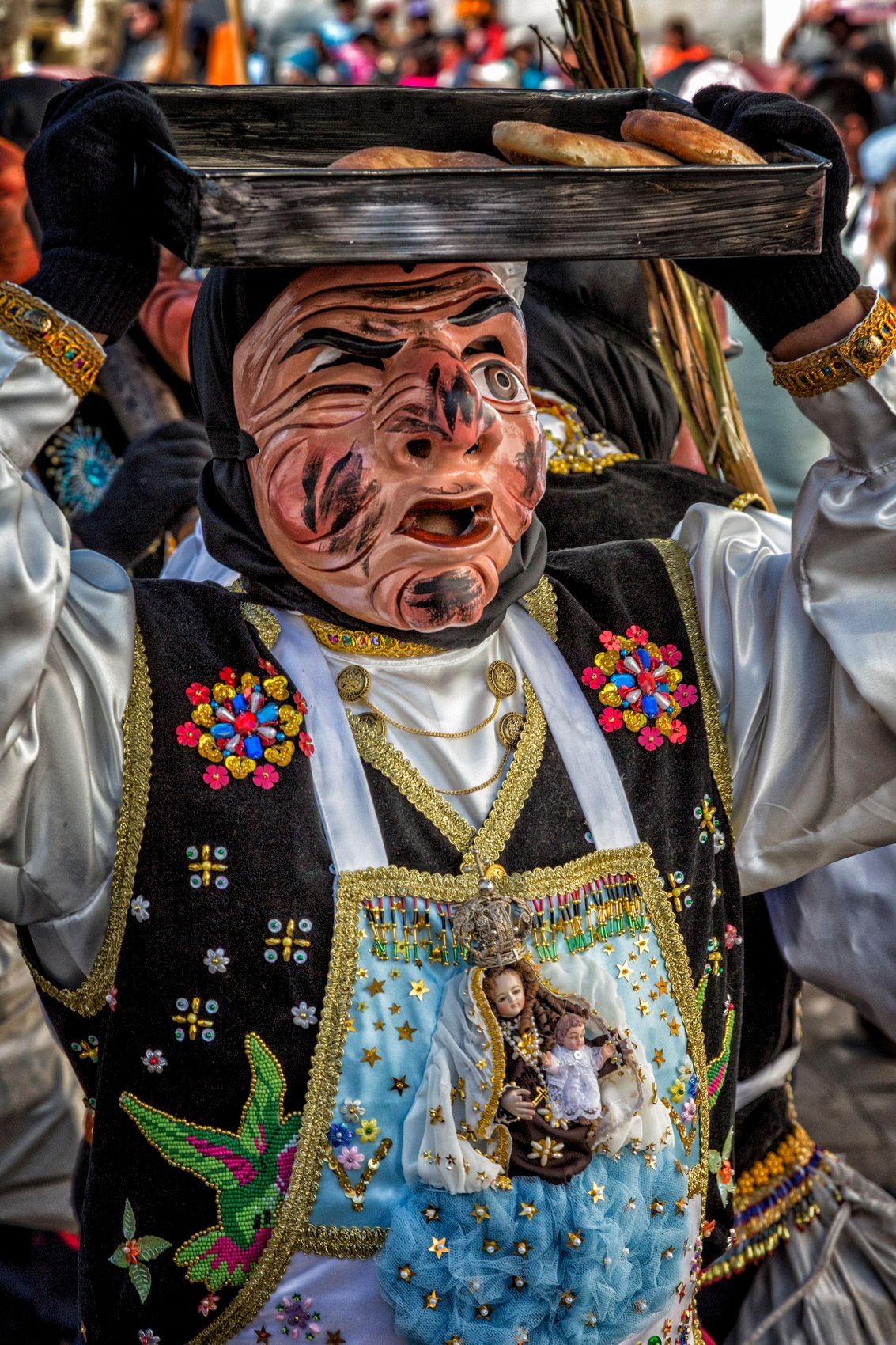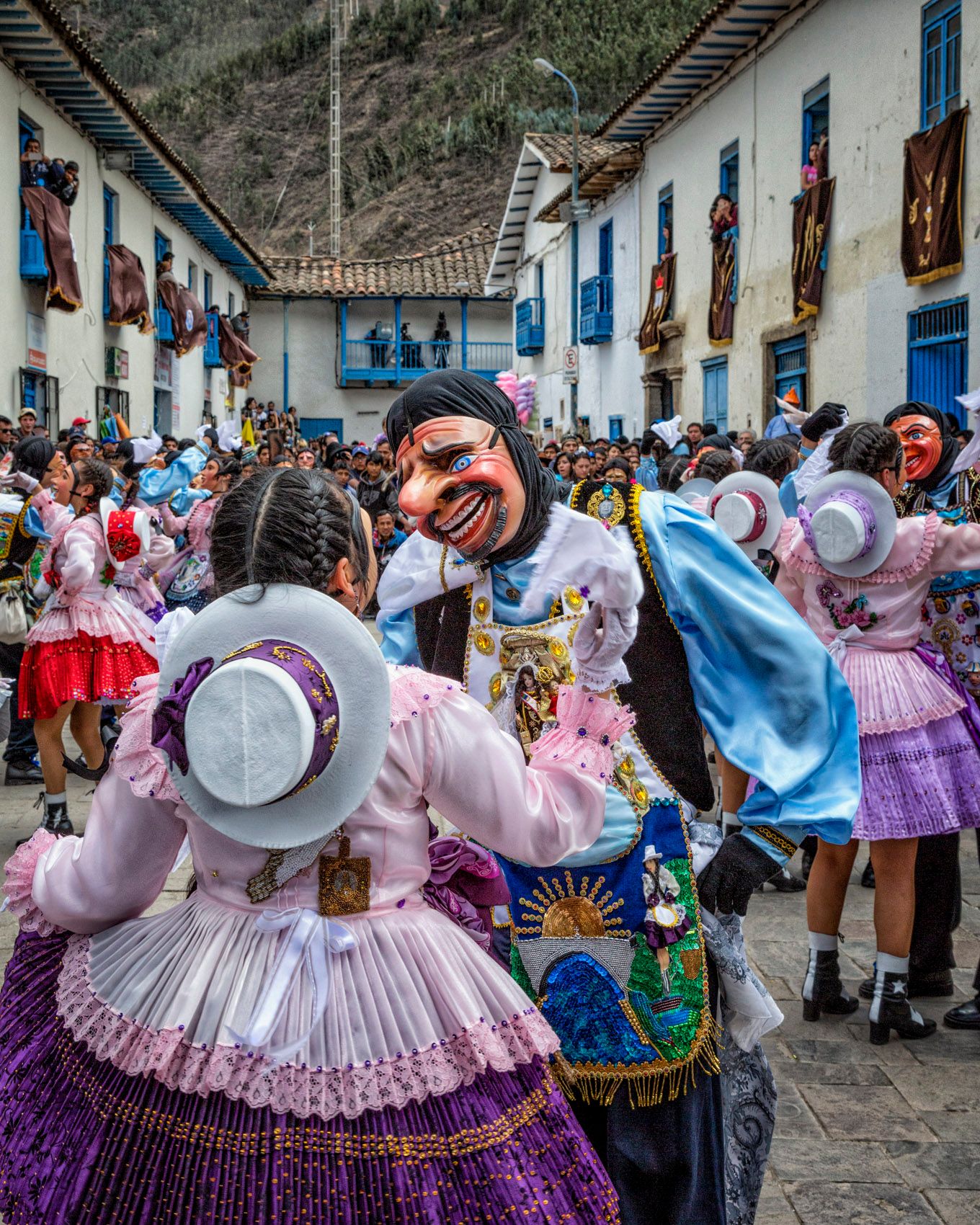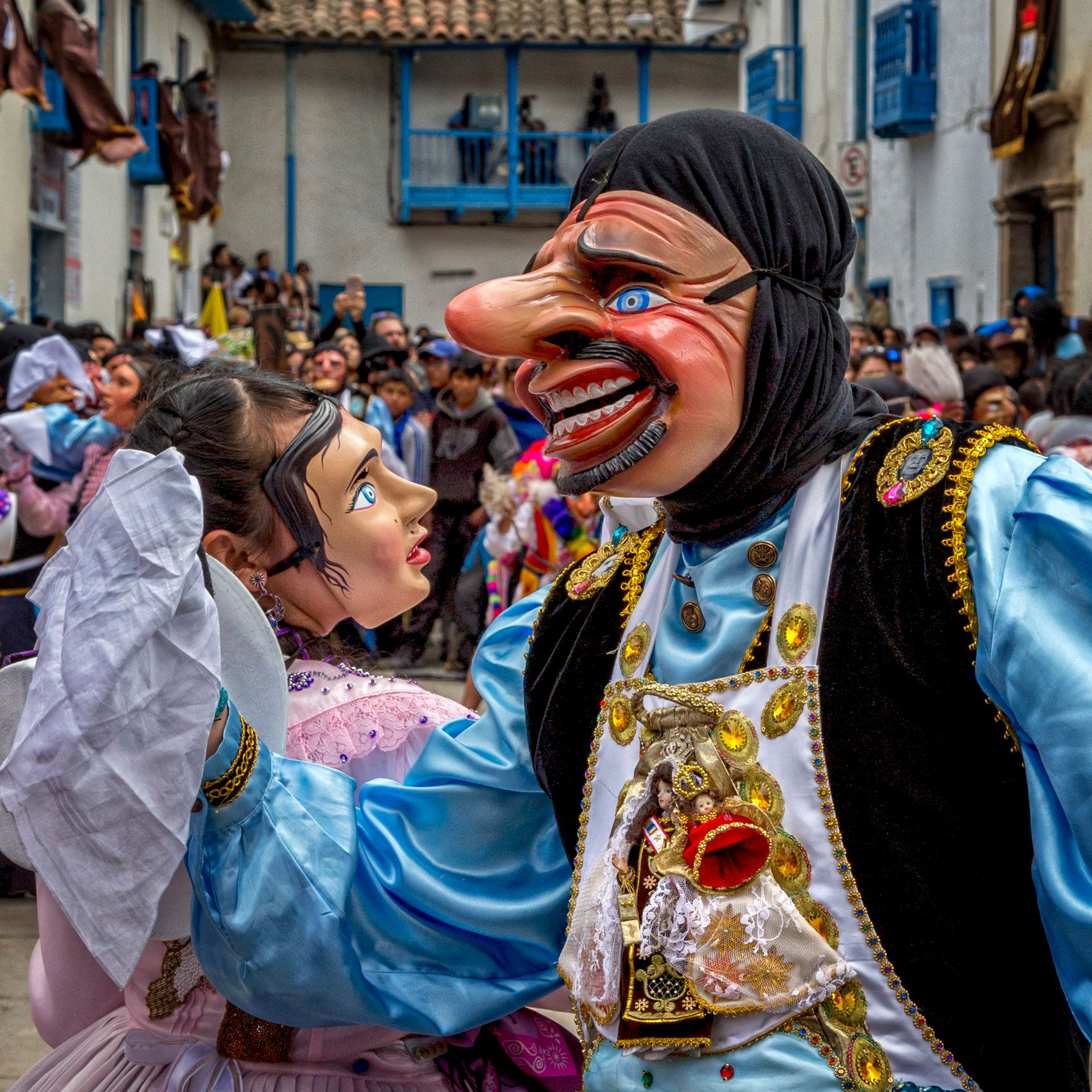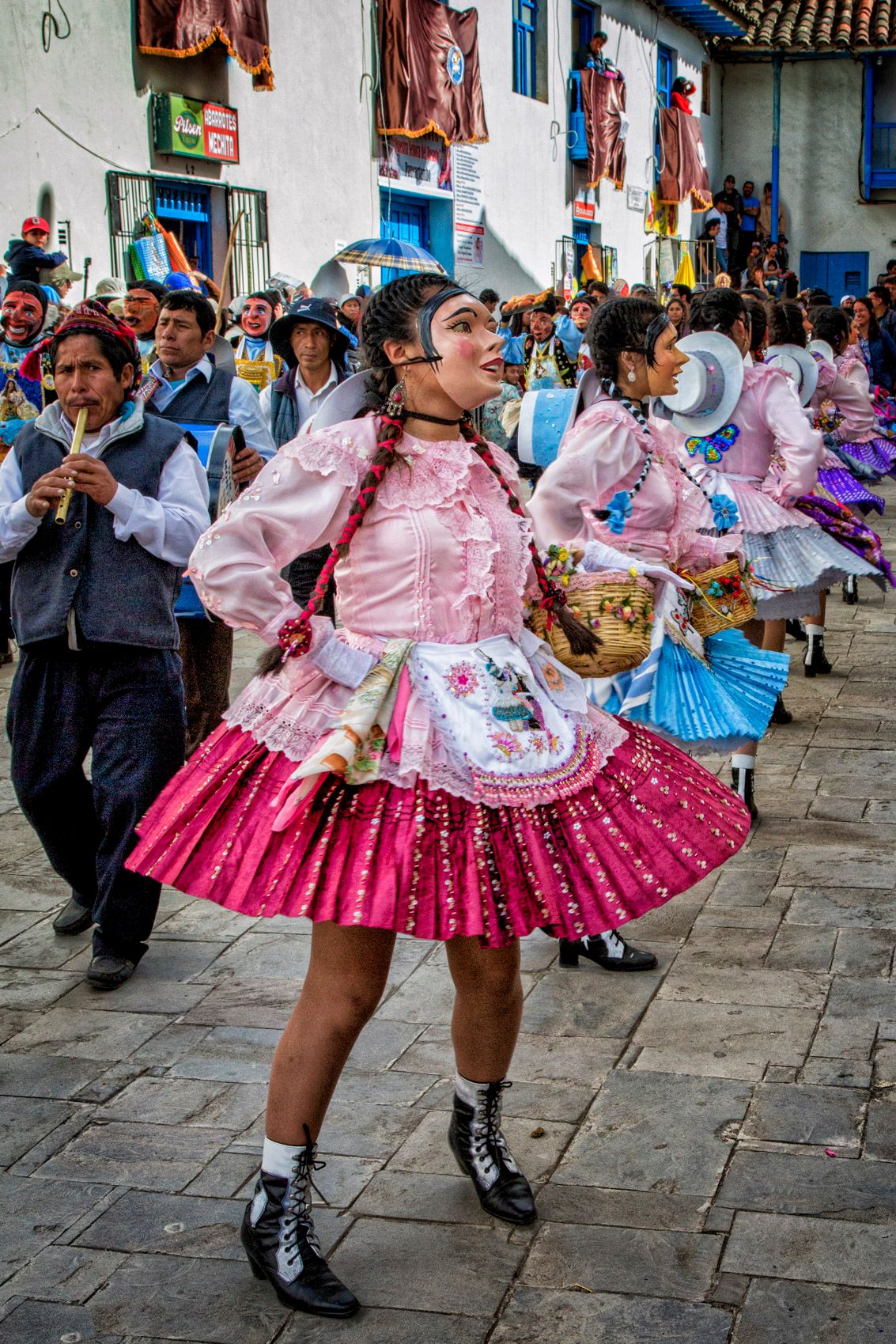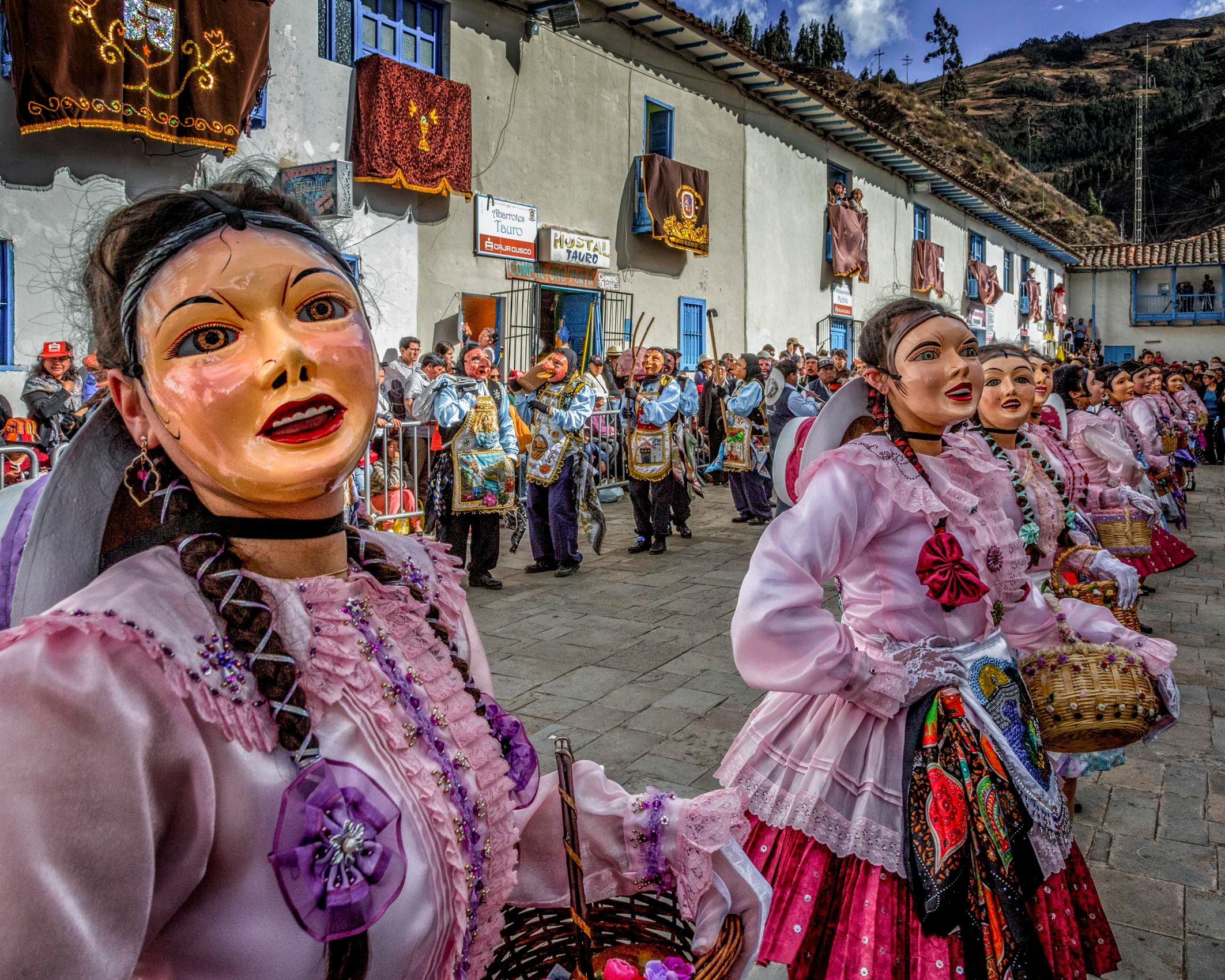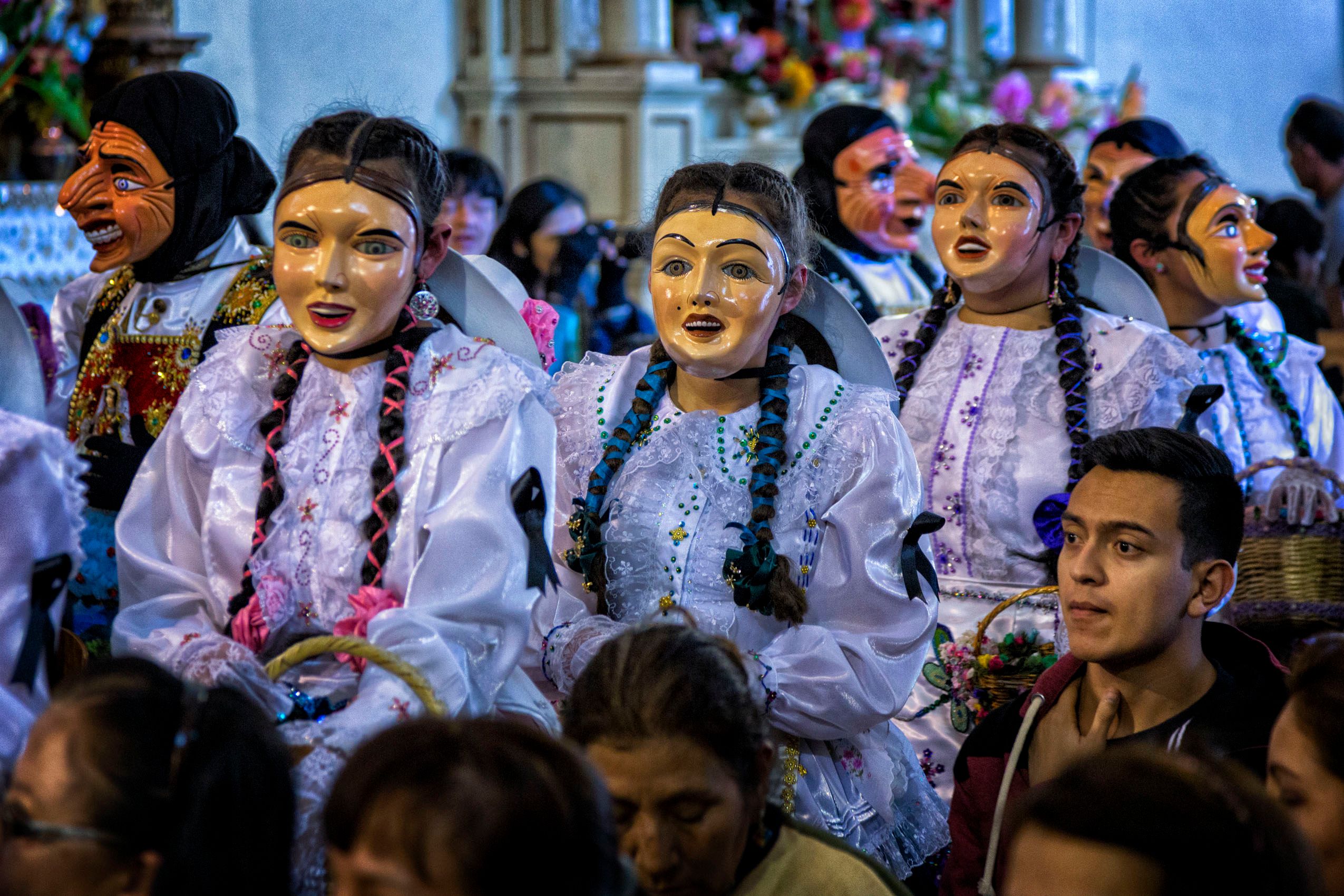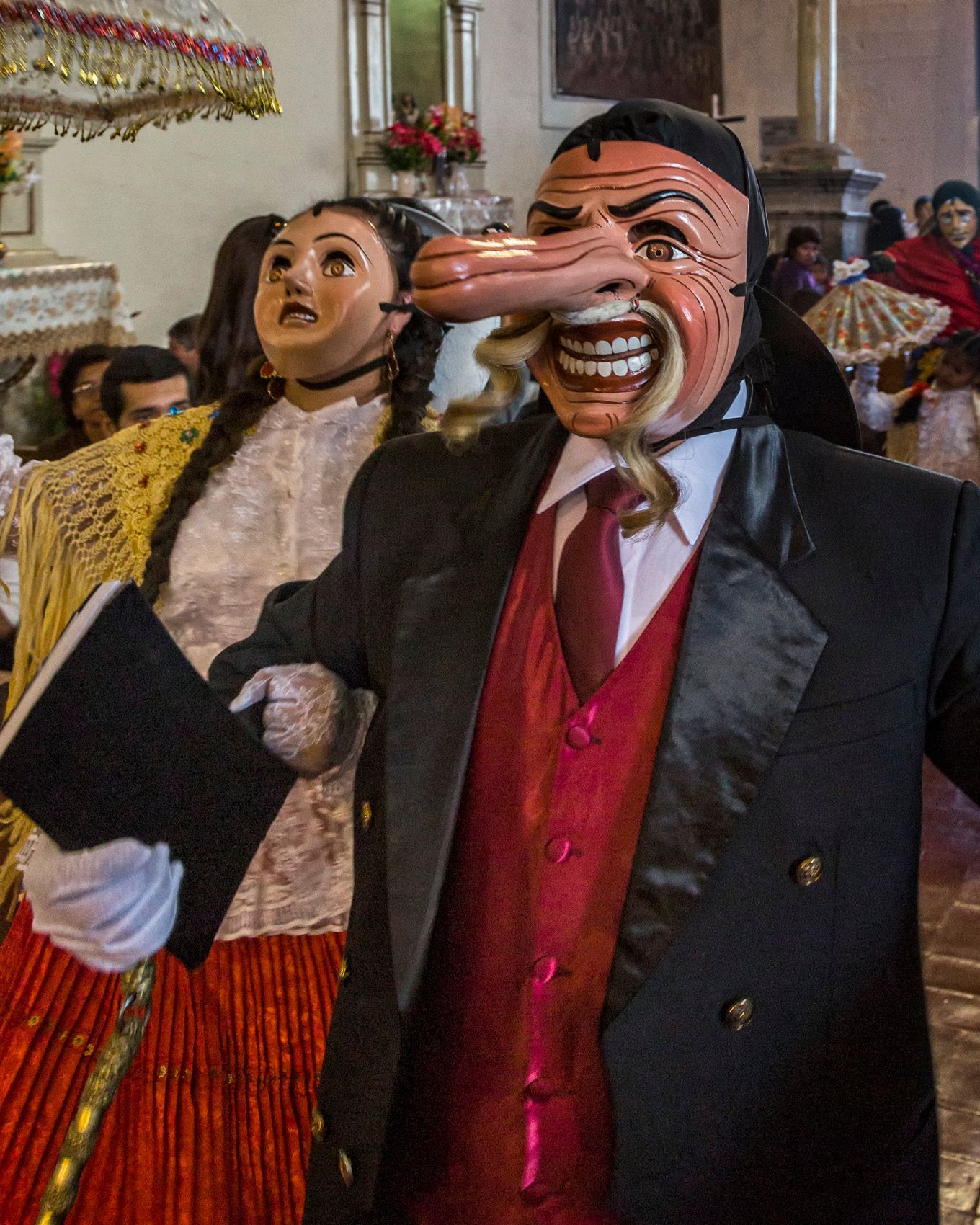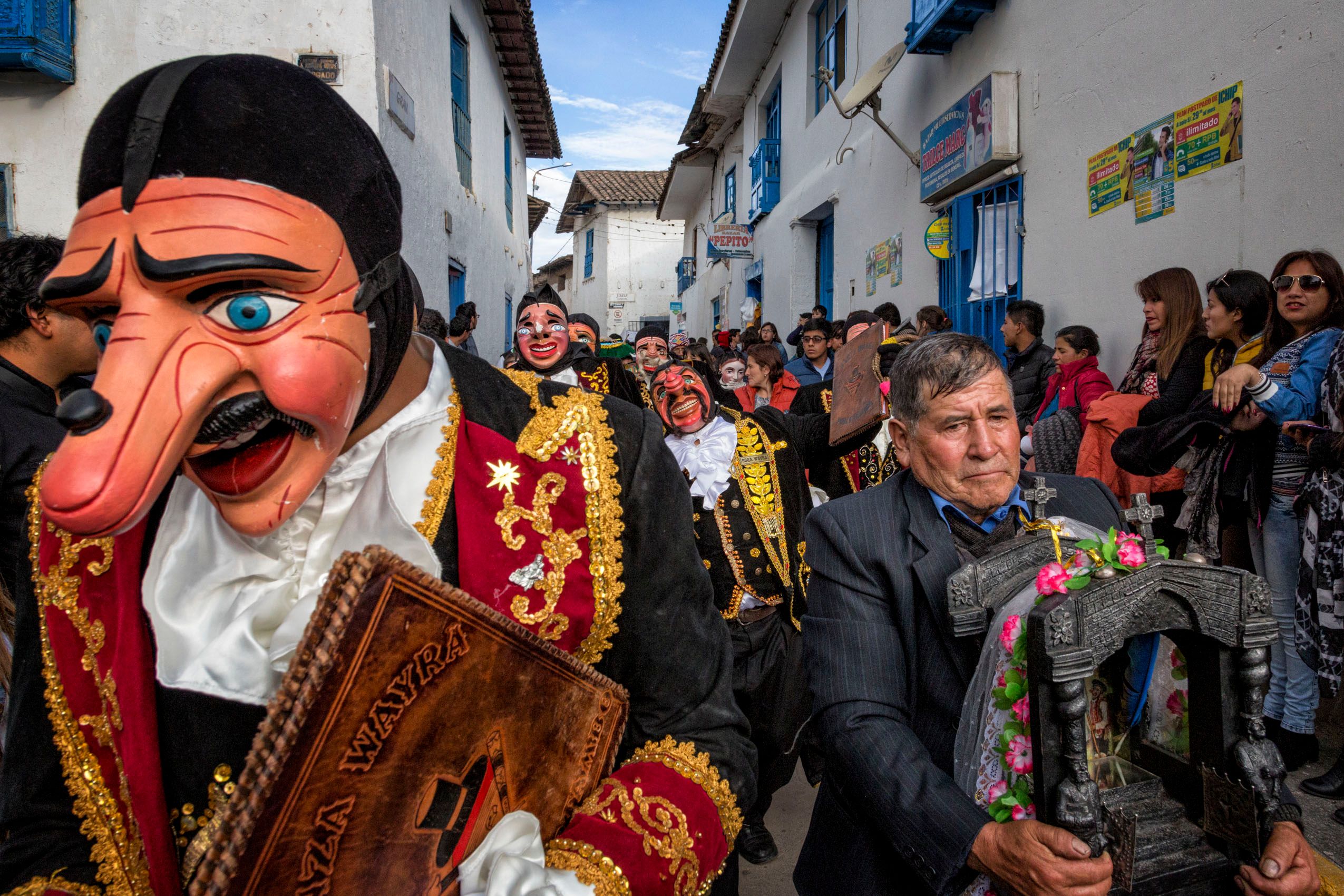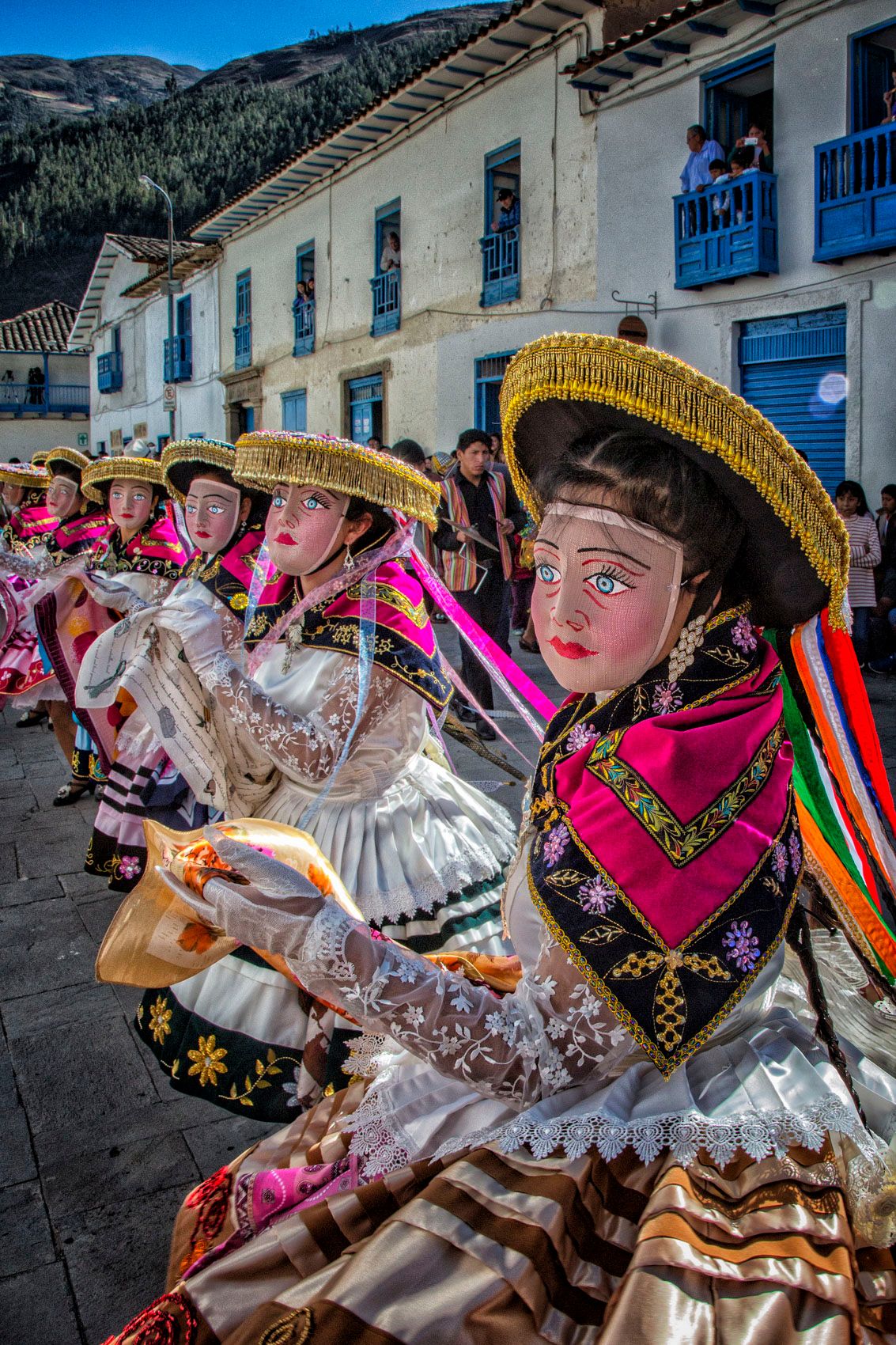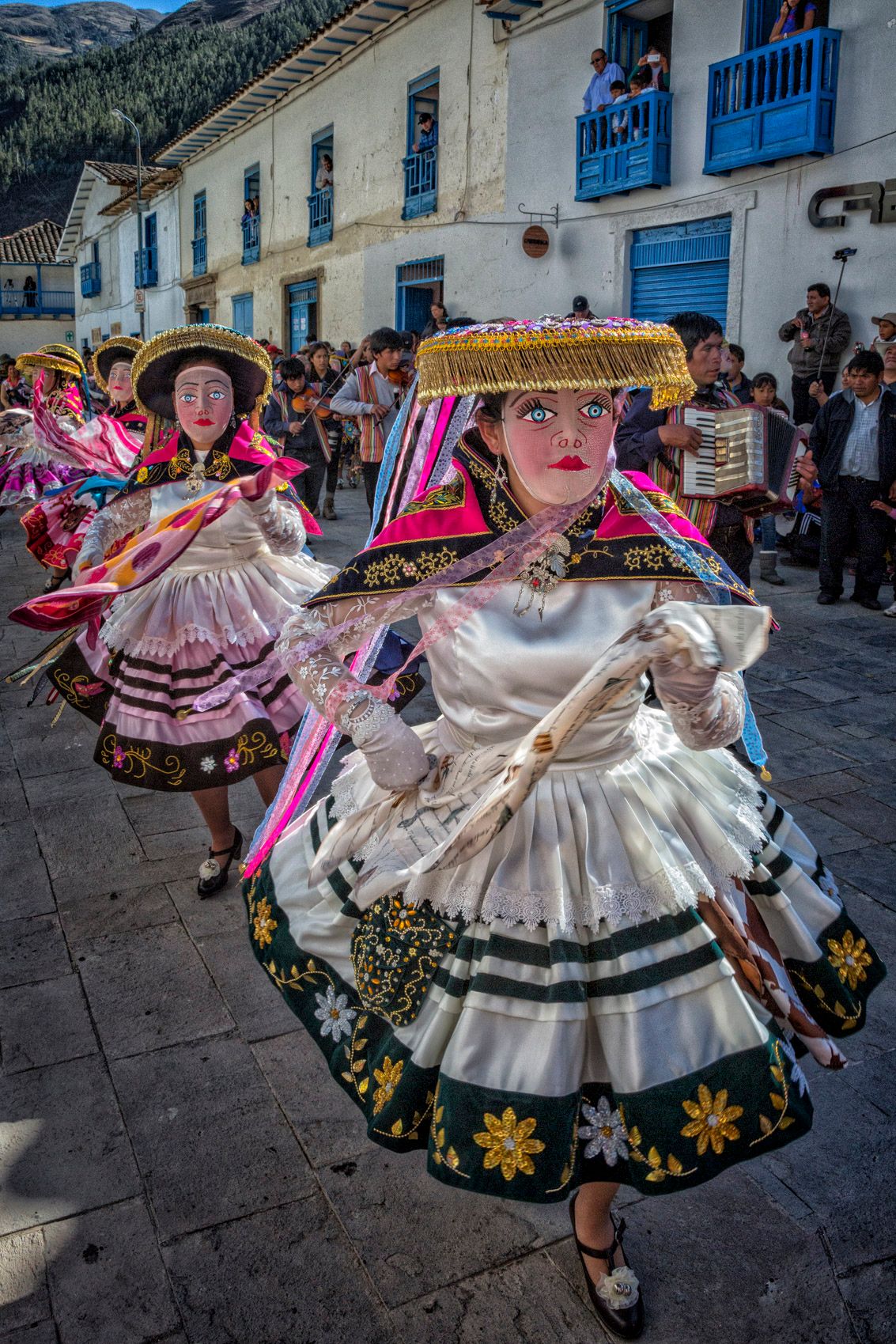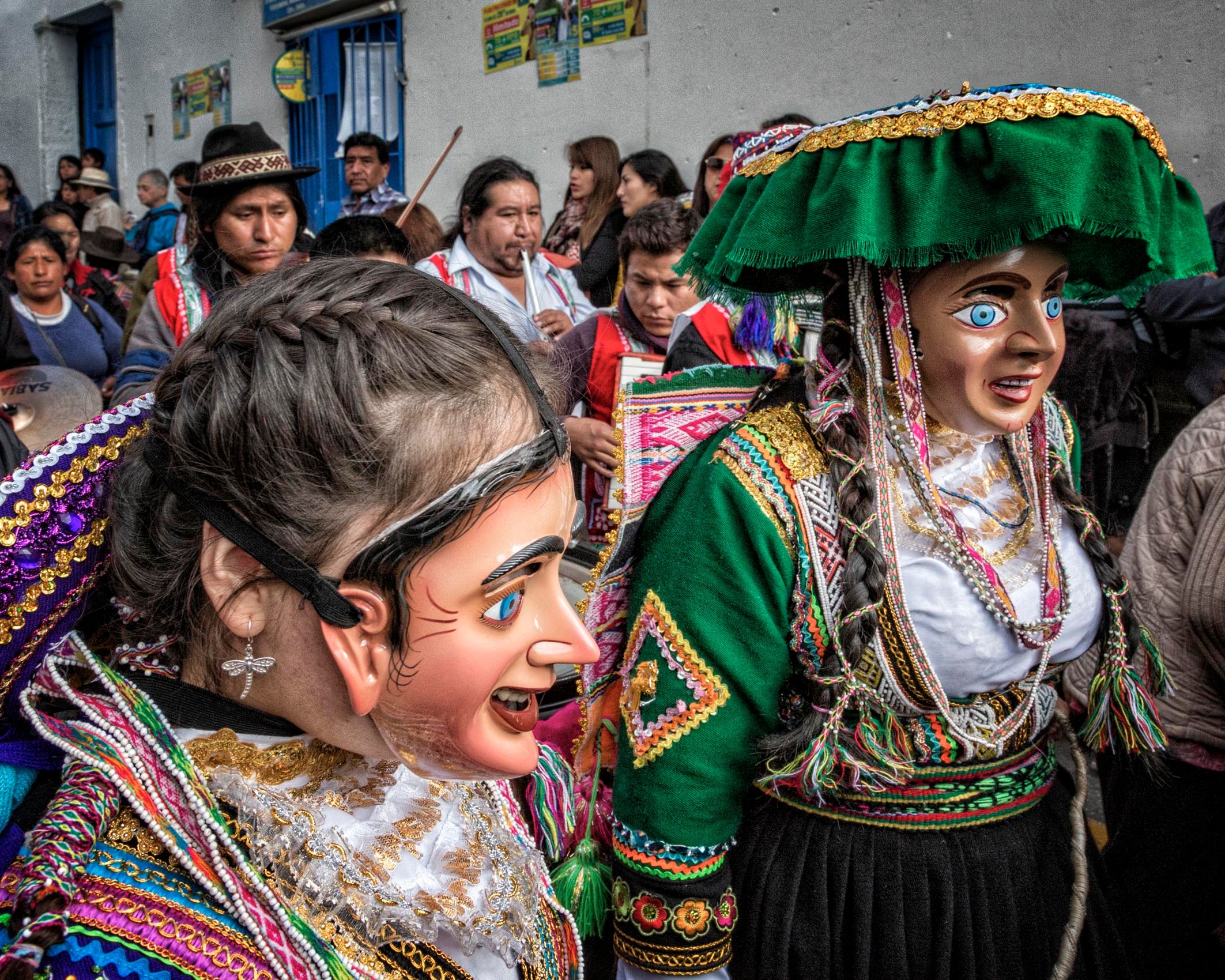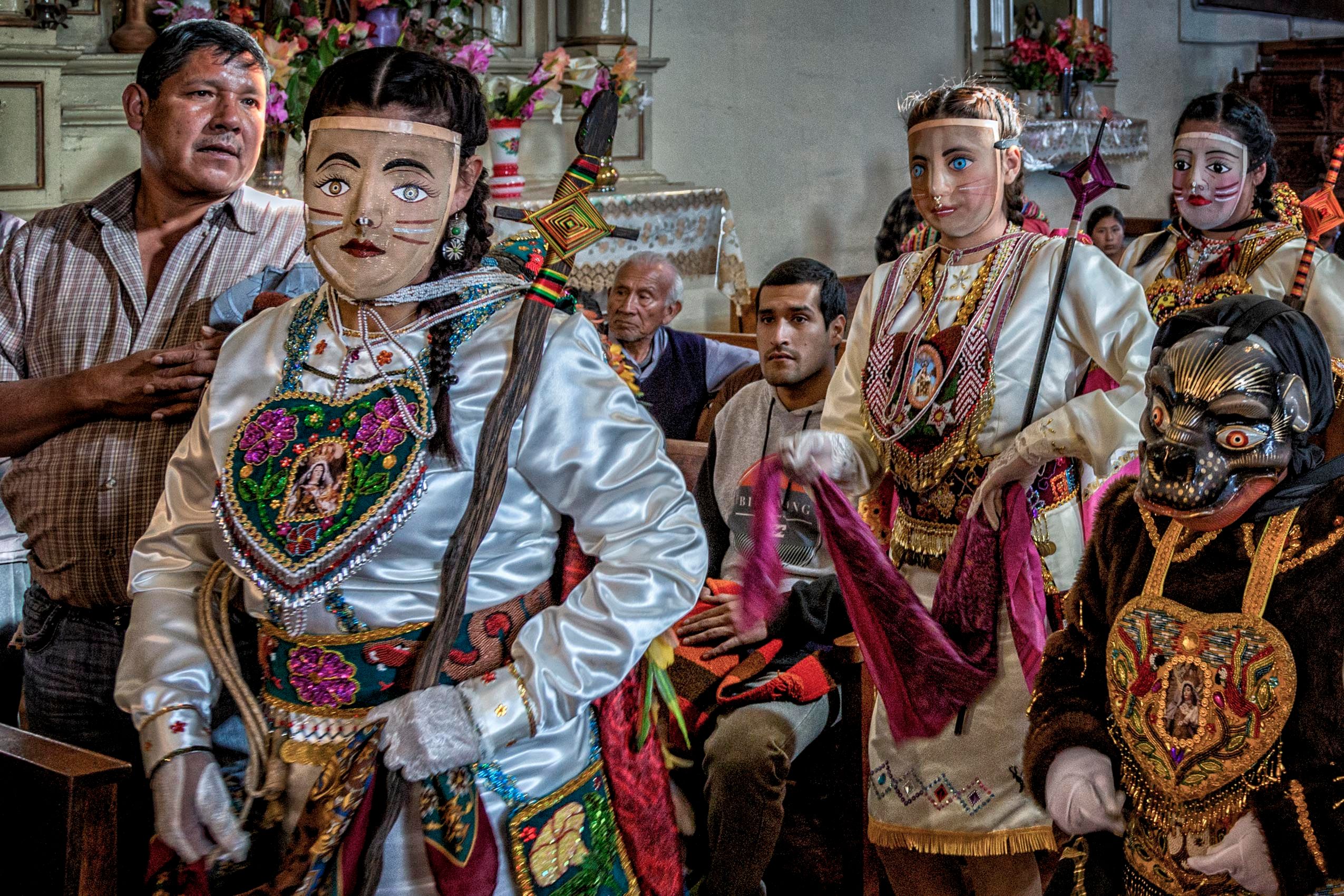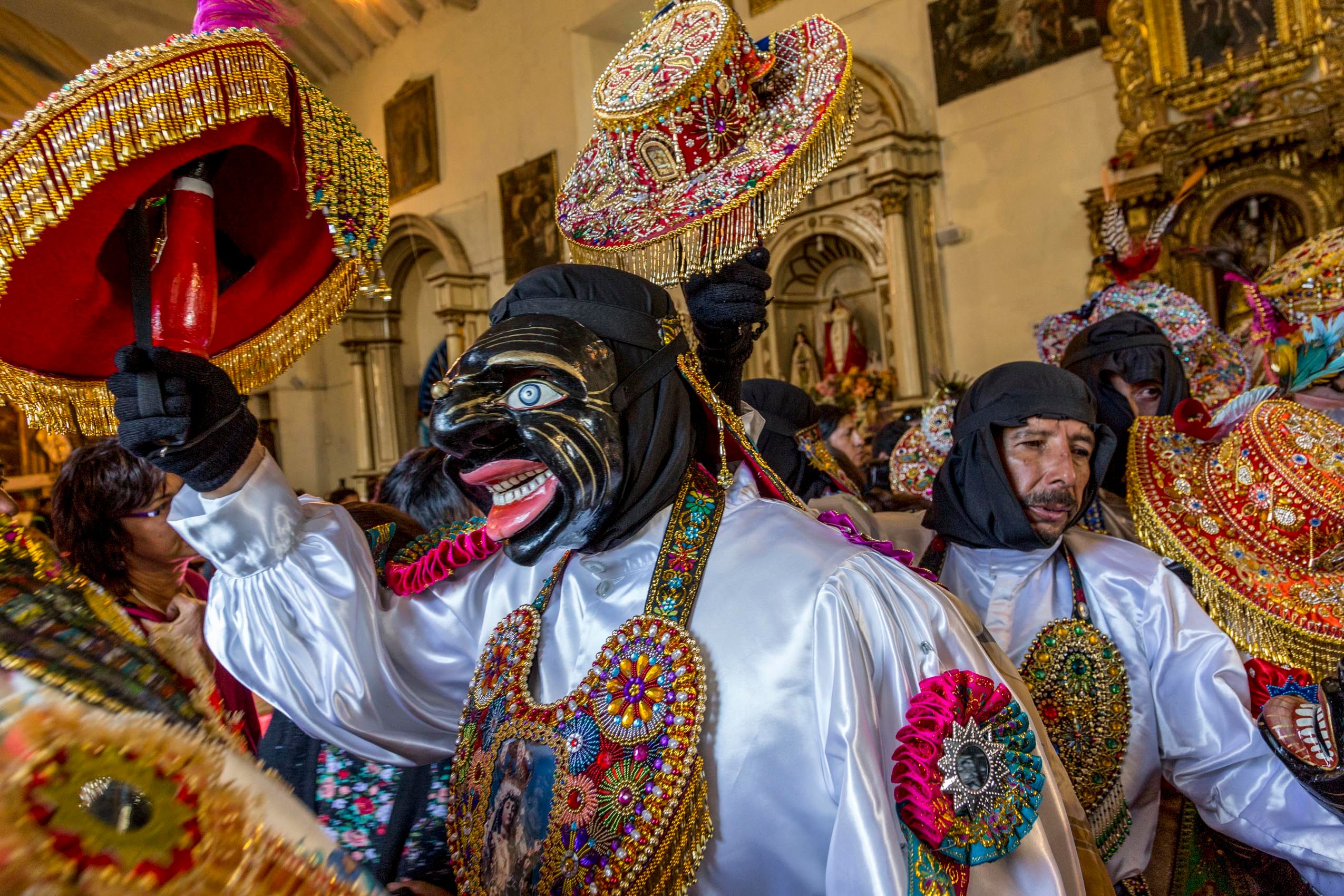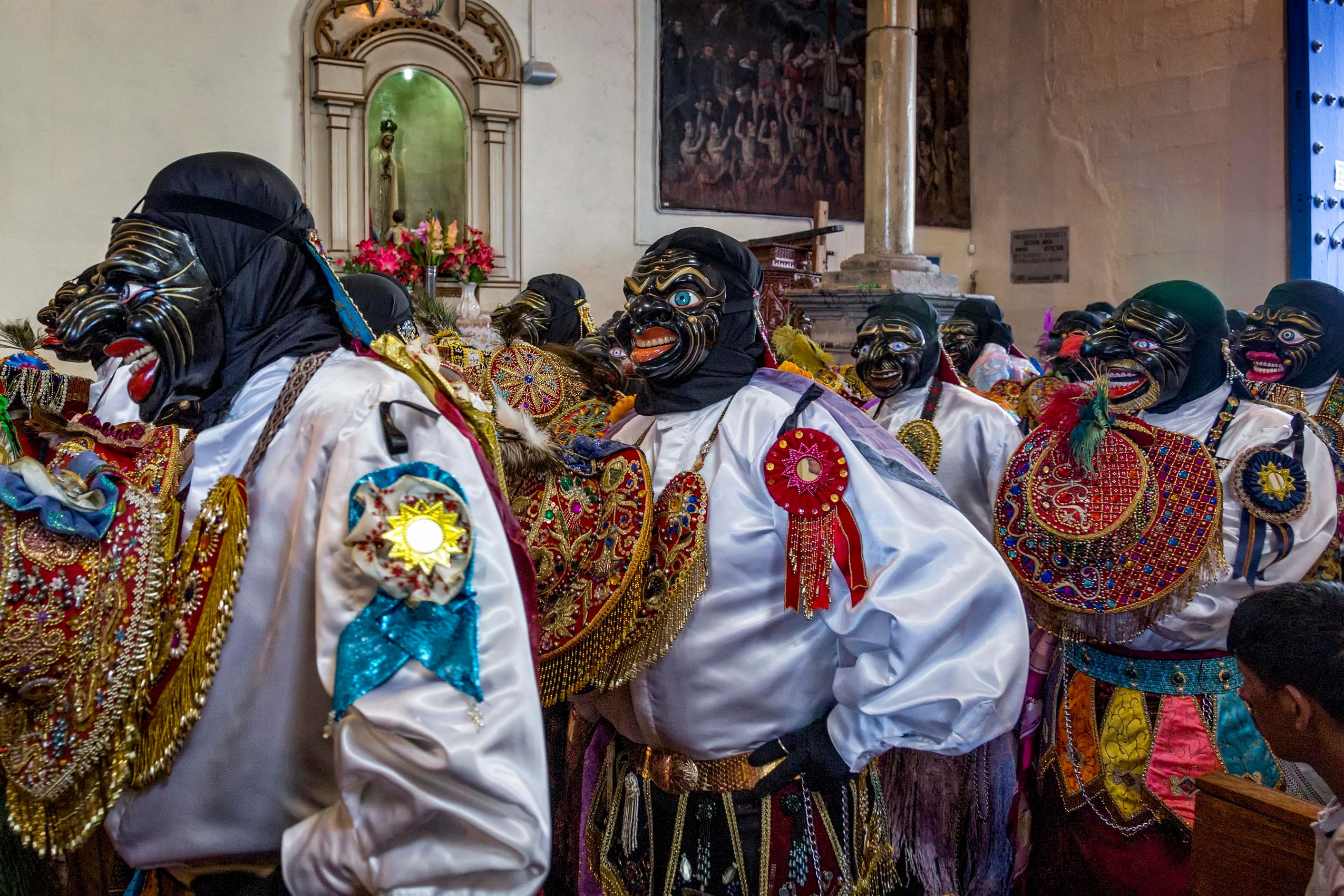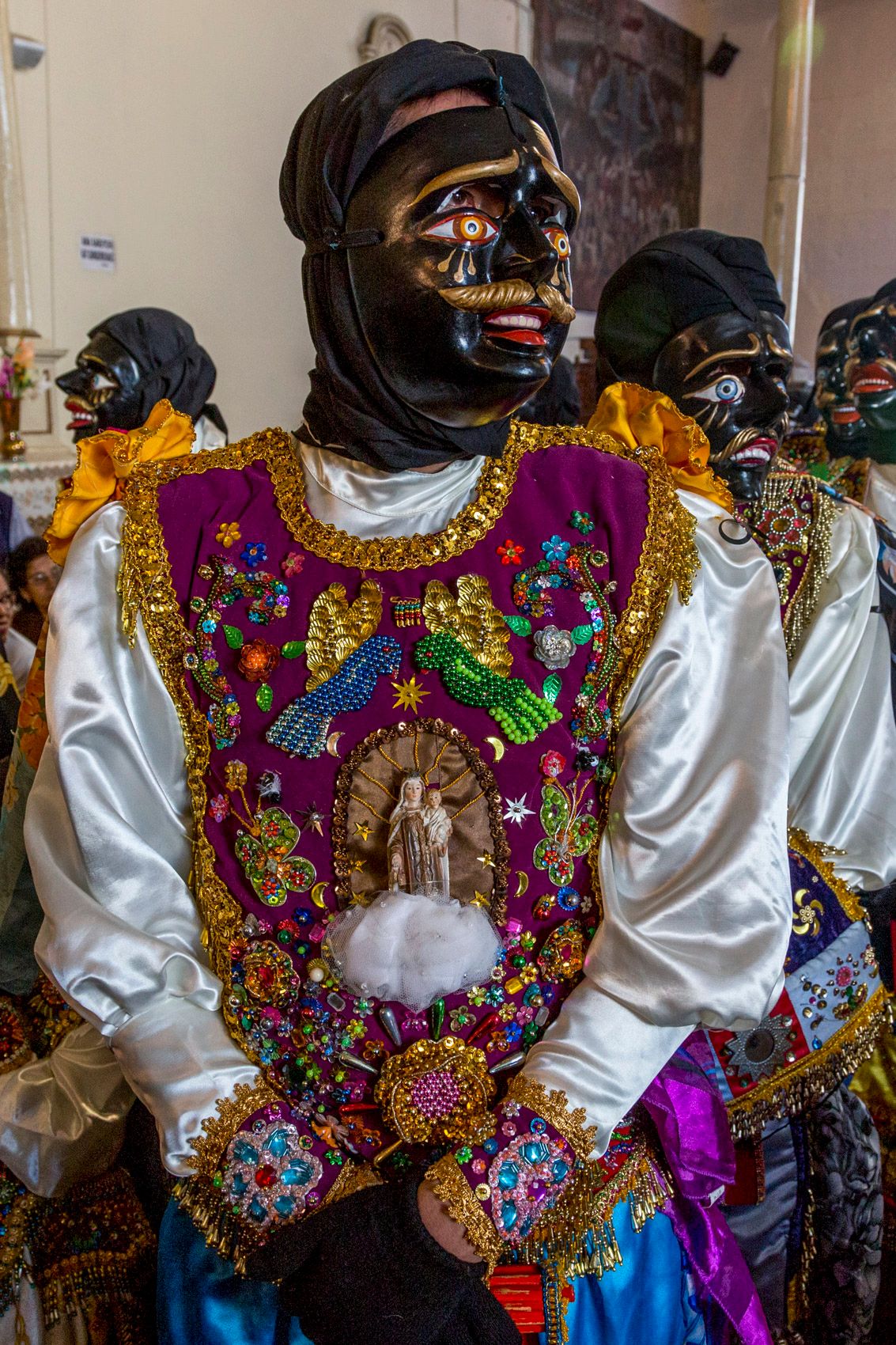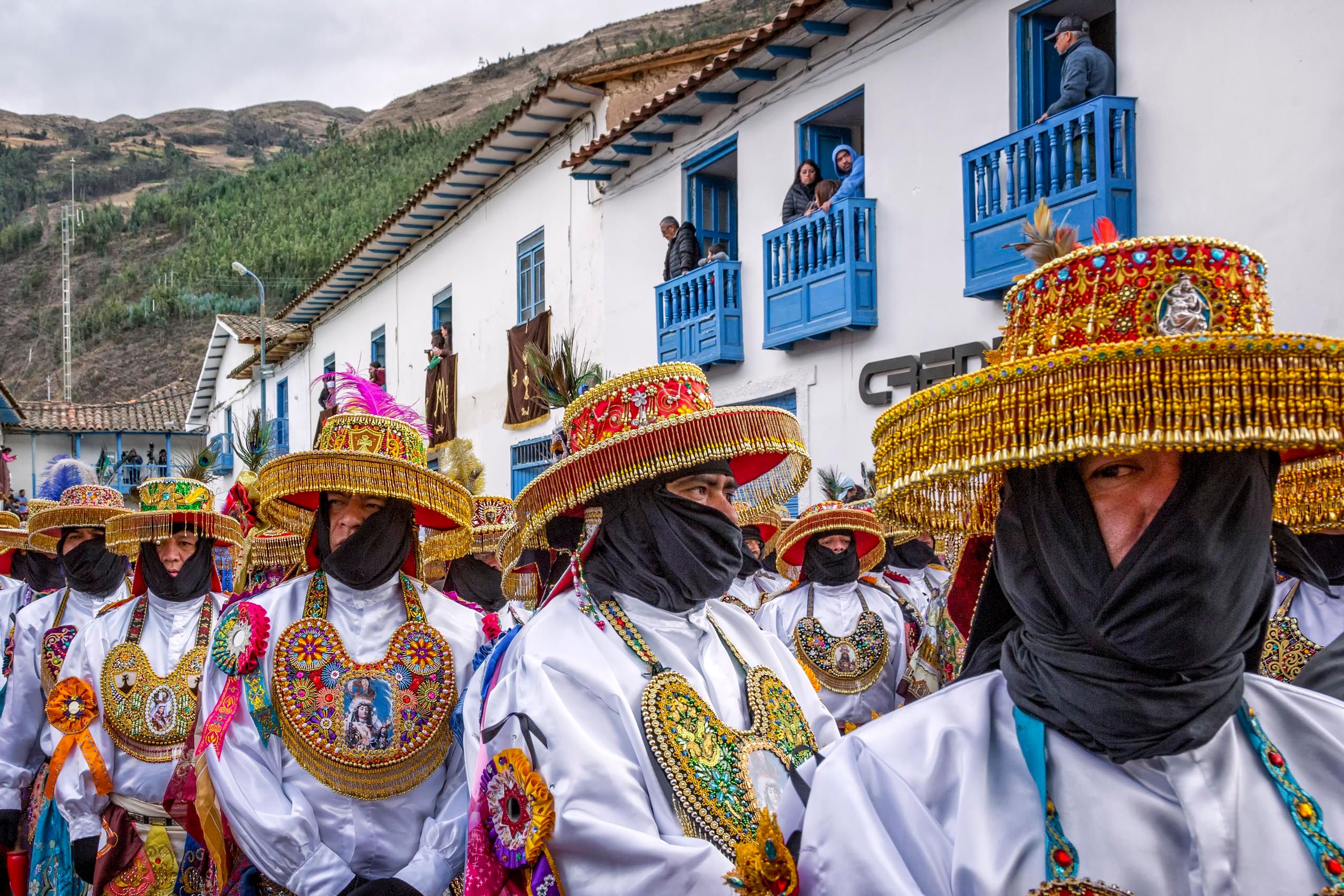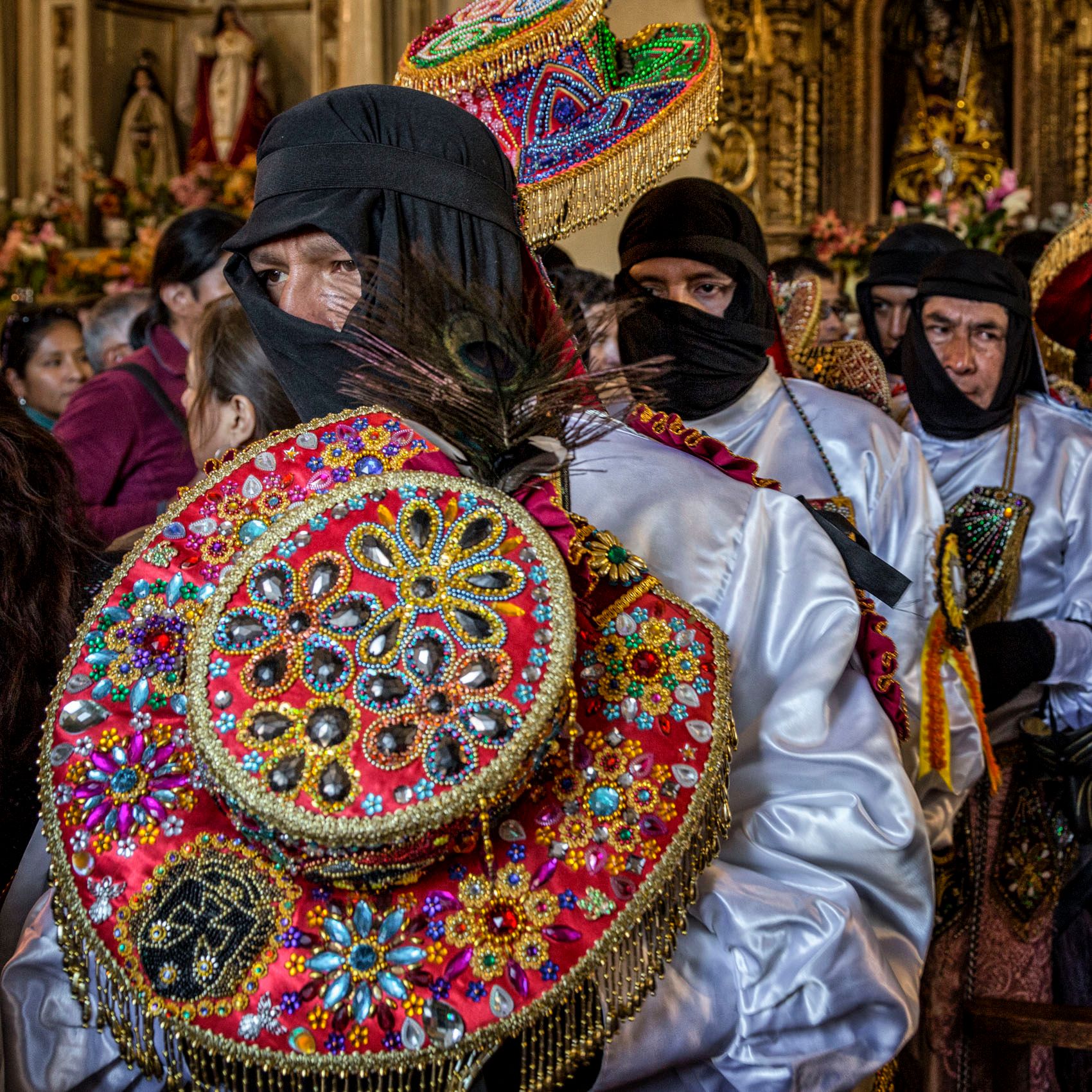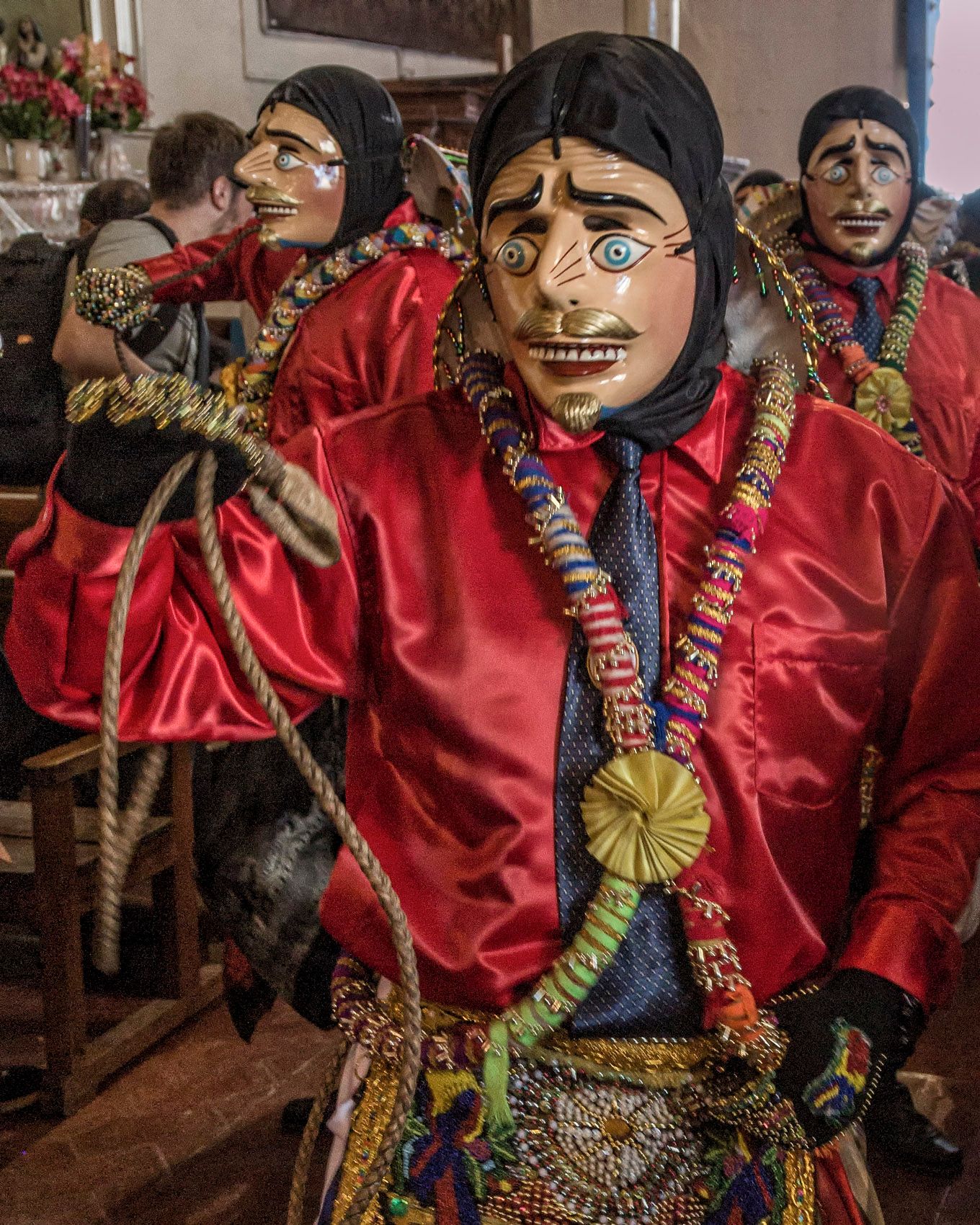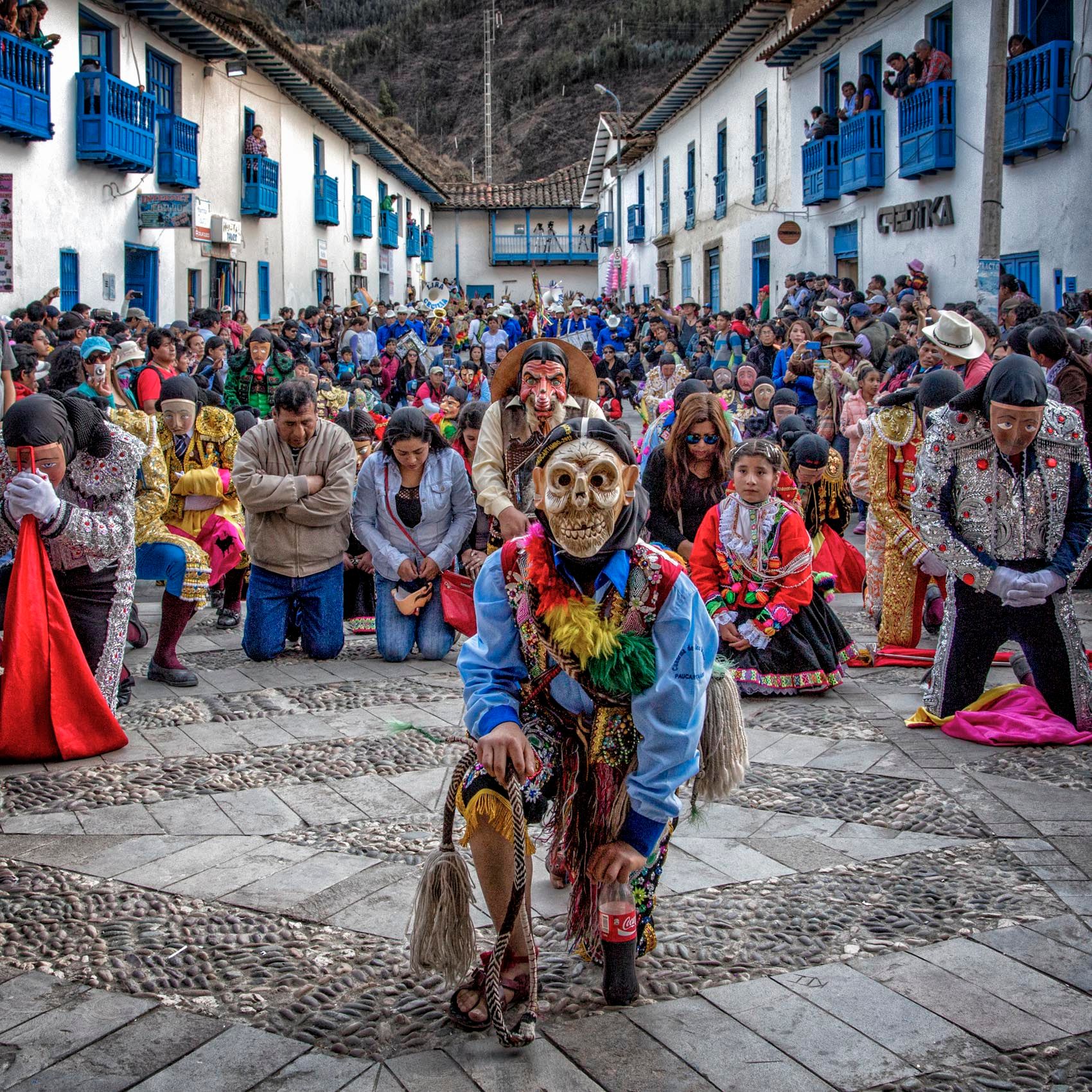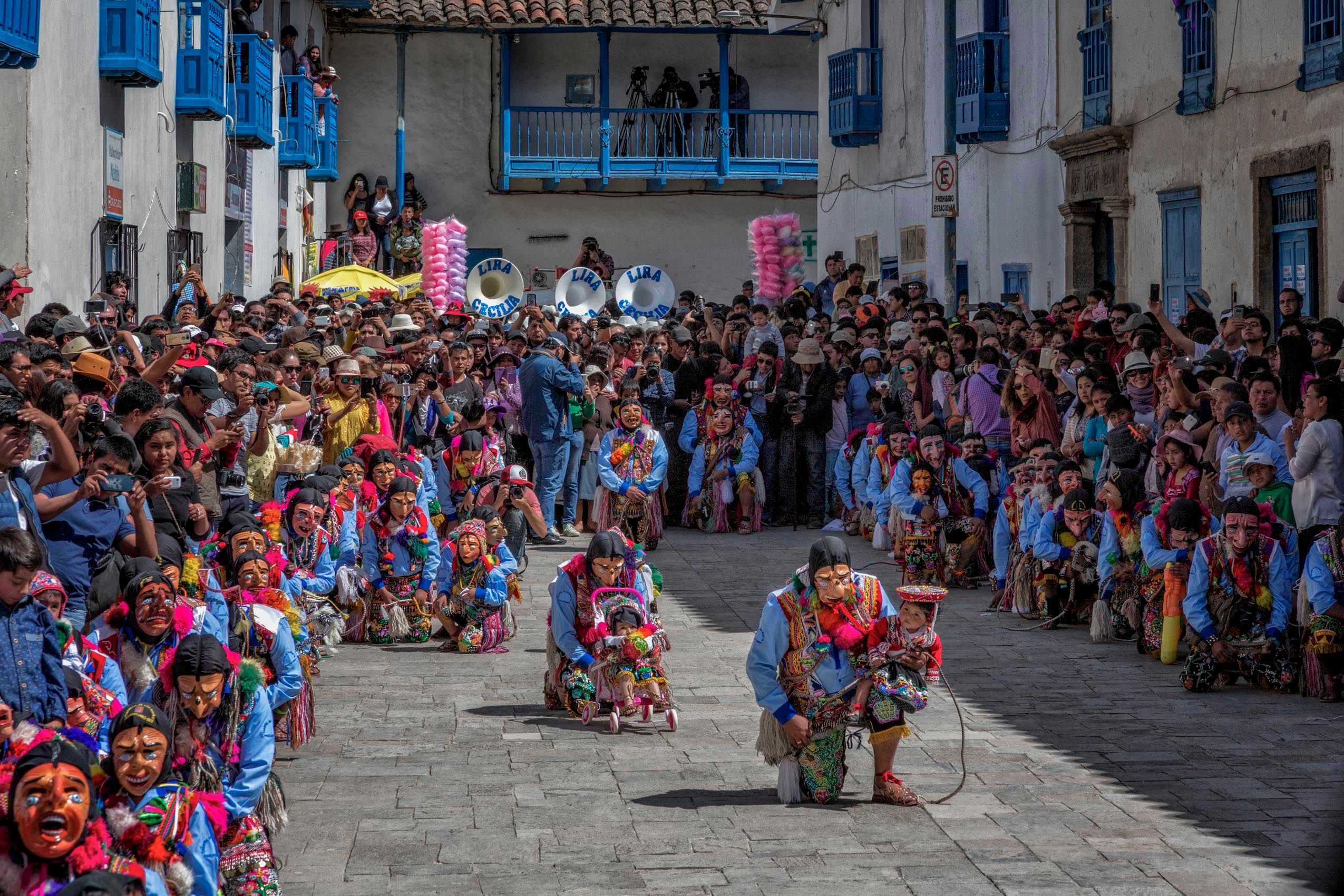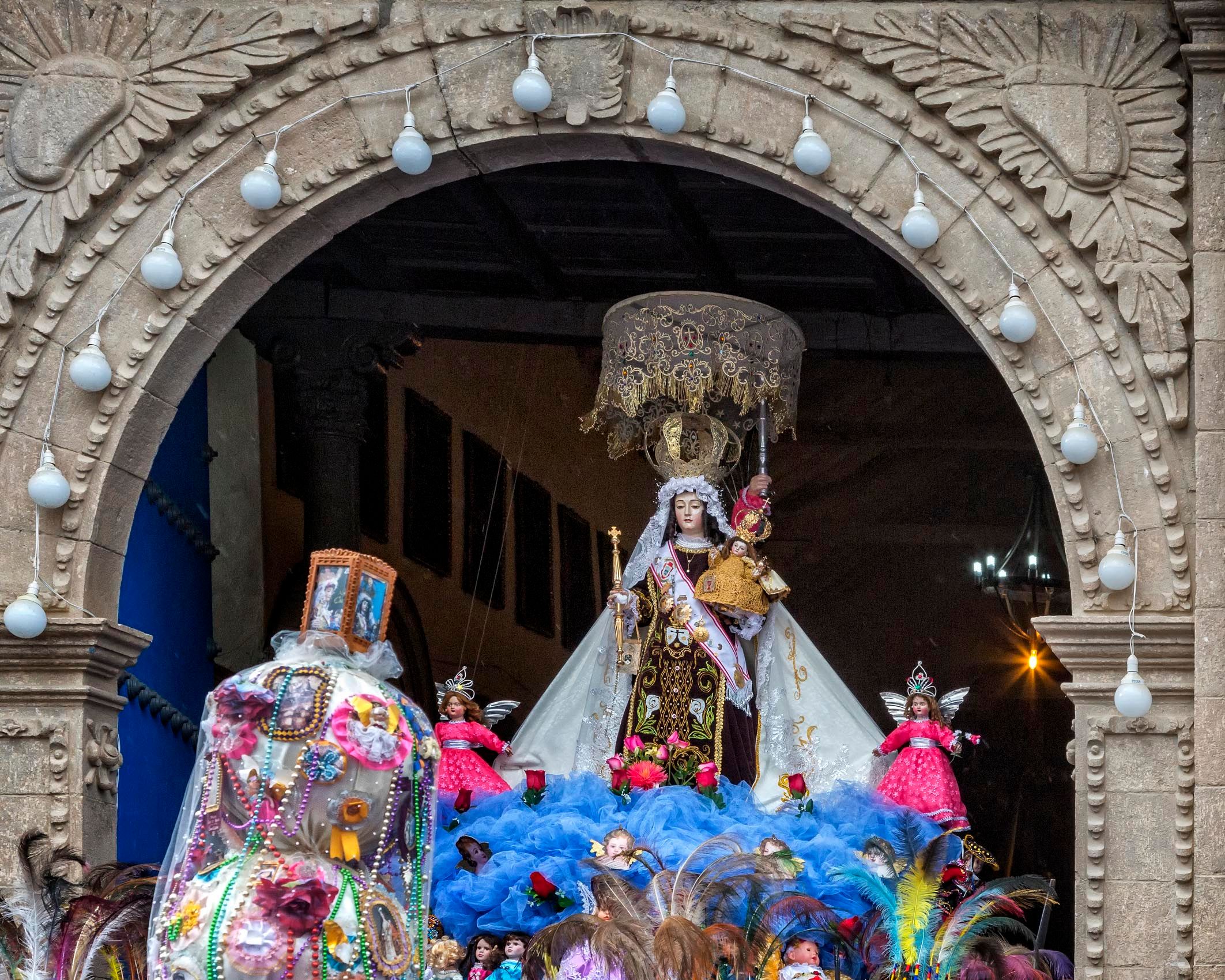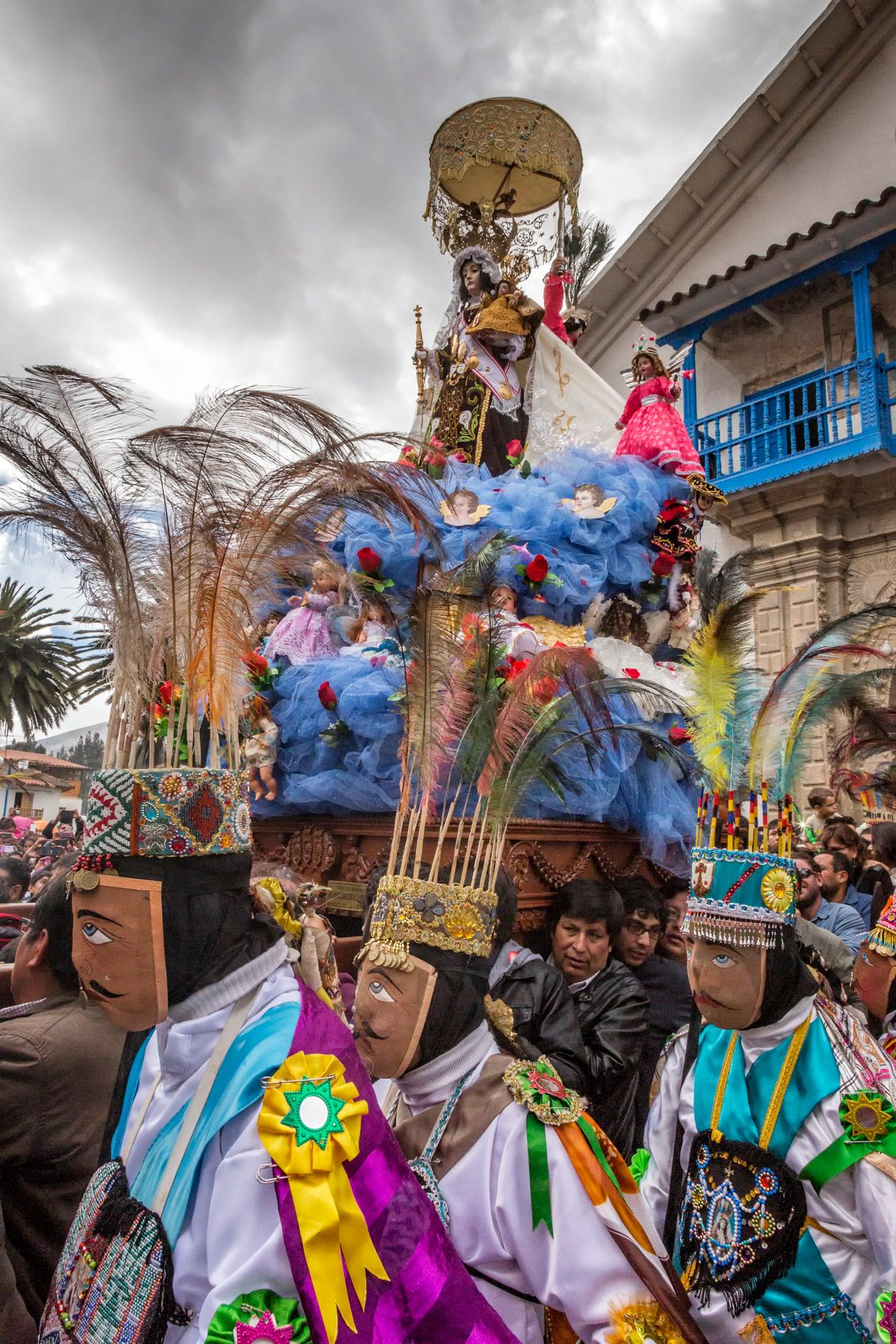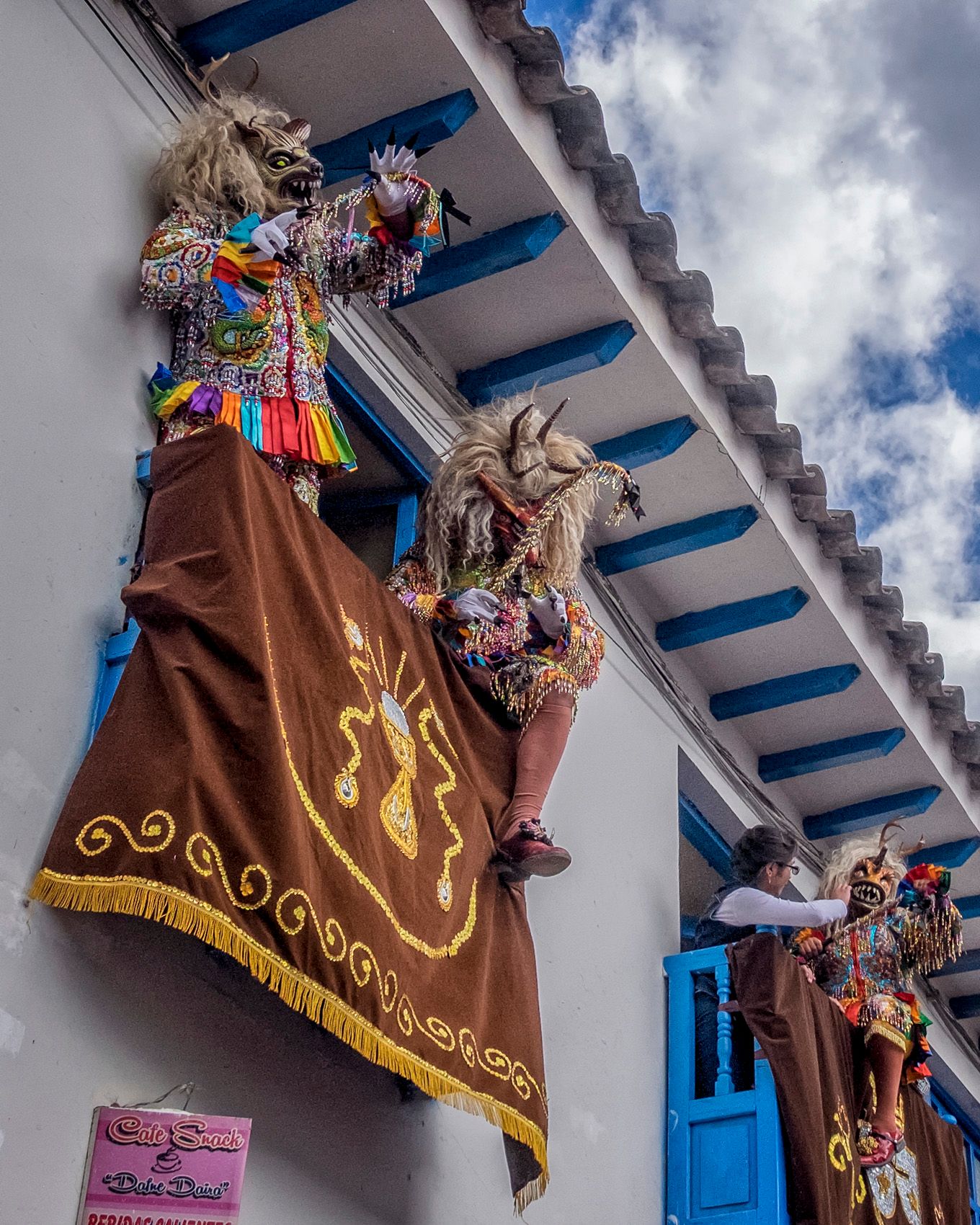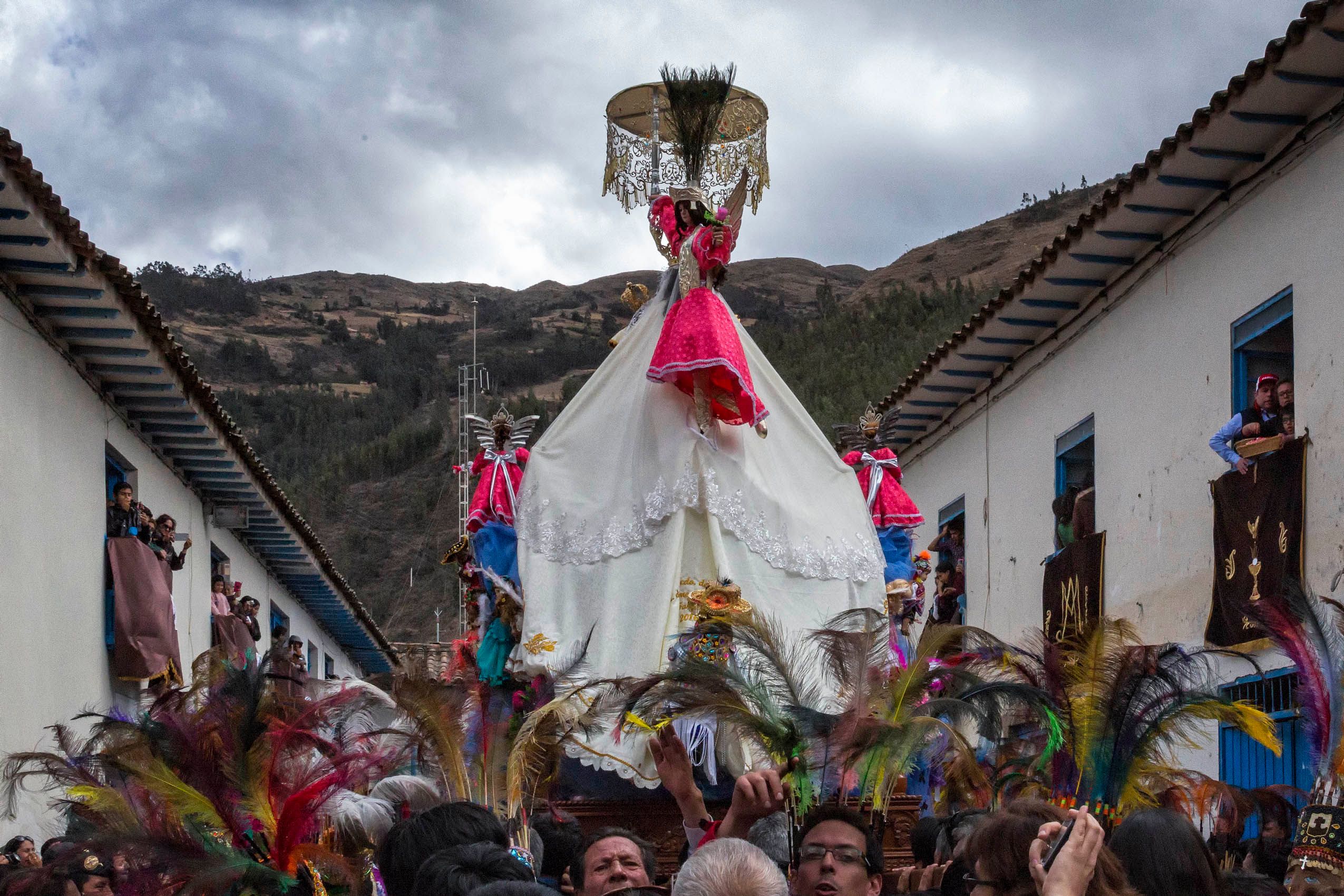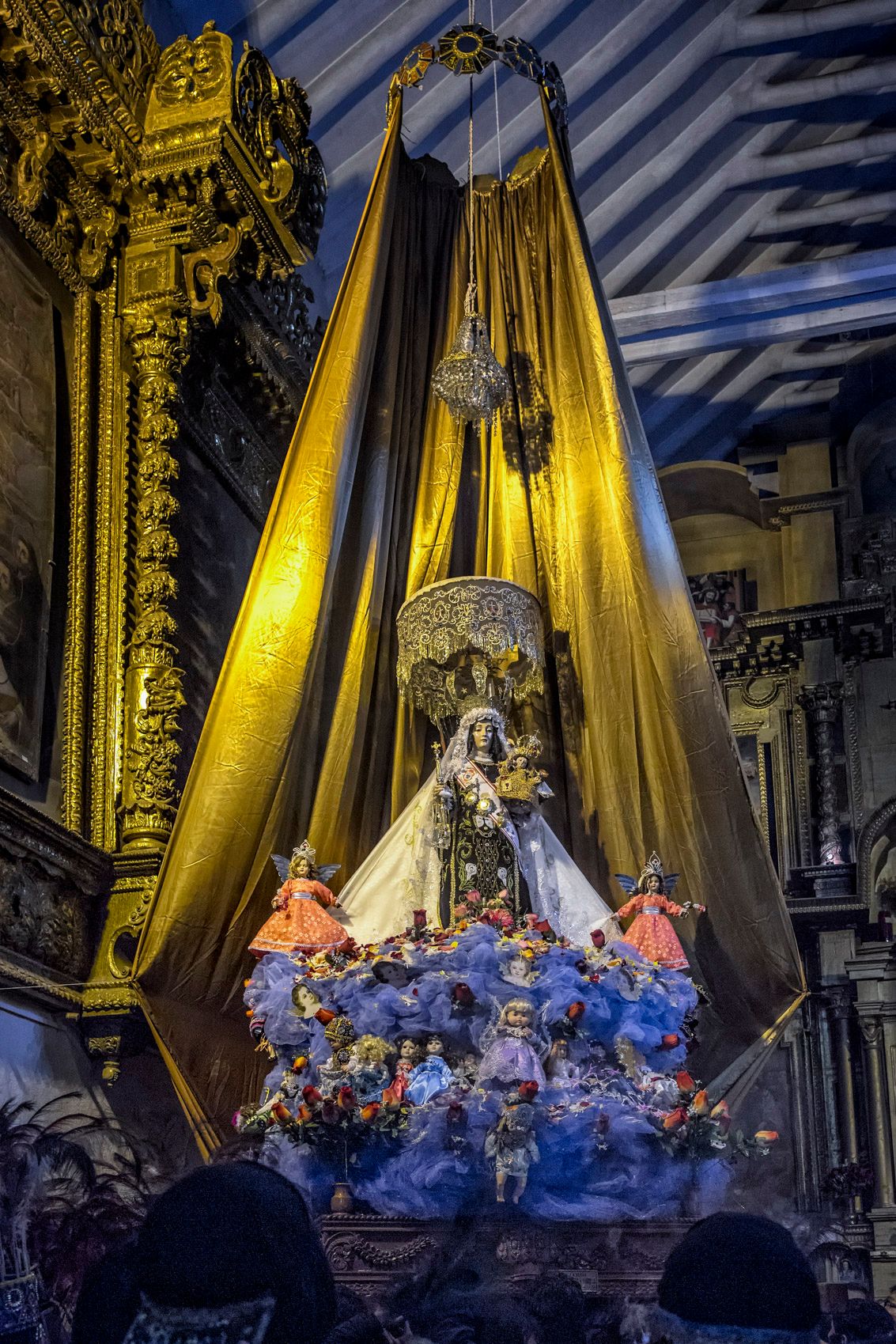PERU: La Festividad de la Virgen del Carmen in Paucartambo
Between the 15th and 18th of July annually, the village of Paucartambo, located about 110 km from Cusco, on the eastern slopes of the Andes and close to the jungle region, becomes the site of a spectacular festival in honor of La Virgen del Carmen or Mamacha Carmen, patron saint of mestizos in the region. In addition to those city dwellers returning to their ancestral village for its annual fiesta, the event has in recent years attracted many thousands of (primarily Peruvian) tourists, temporarily overwhelming the local infrastructure. Preparations take place over many months, and seem to involve every inhabitant, whether in practicing dances, sewing costumes, or making masks. The mestizos of Paucartambo (people of mixed ethnicity and cultural traditions) are the participants; Quechua speaking indigenous people of surrounding villages are among the spectators, or may be among the hired semi-professional musicians who accompany the splendidly choreographed and costumed dance troupes. There are a number of quite different legends about the origins of La Virgen del Carmen, her statue and her cult but central to the underlying narrative of the festival’s events and performances is a conflict between two rival groups of devotees: the Chunchos and the Qollas. The former are said to originate in the lowland jungle, are decorated with feathers, and behave in dignified and decorous ways; they are the guardians of the Virgin and representatives of the local community. The Qollas, on the other hand, are wild and unruly traders from the Andean highlands, conspicuously accompanied by their llamas and frequently twisting wool fibres between their fingers. A mock battle is staged between these groups during the festival, which is invariably won by the Chunchos, keeping the Virgin safe in Paucartambo for another year. Other symbolic groups participating in the dancing and processions into and out of the church include Qhapaq Negros, representing the black slaves of the colonial era, and the Doctores, representing lawyers and powerful bureaucrats who have traditionally exploited country people. A distinct group are the Saqras or devils, wearing grotesque masks or blonde wigs that parody European colonials; these demonic antagonists of Mamacha Carmen climb onto balconies and rooftops when the statue processes through the village, gesticulating wildly and averting their eyes from the saint. Some of these groups and events are captured in this gallery, although it can only begin to convey the joy and beauty of the ensemble dancing that honors the saint and delights the onlookers.

